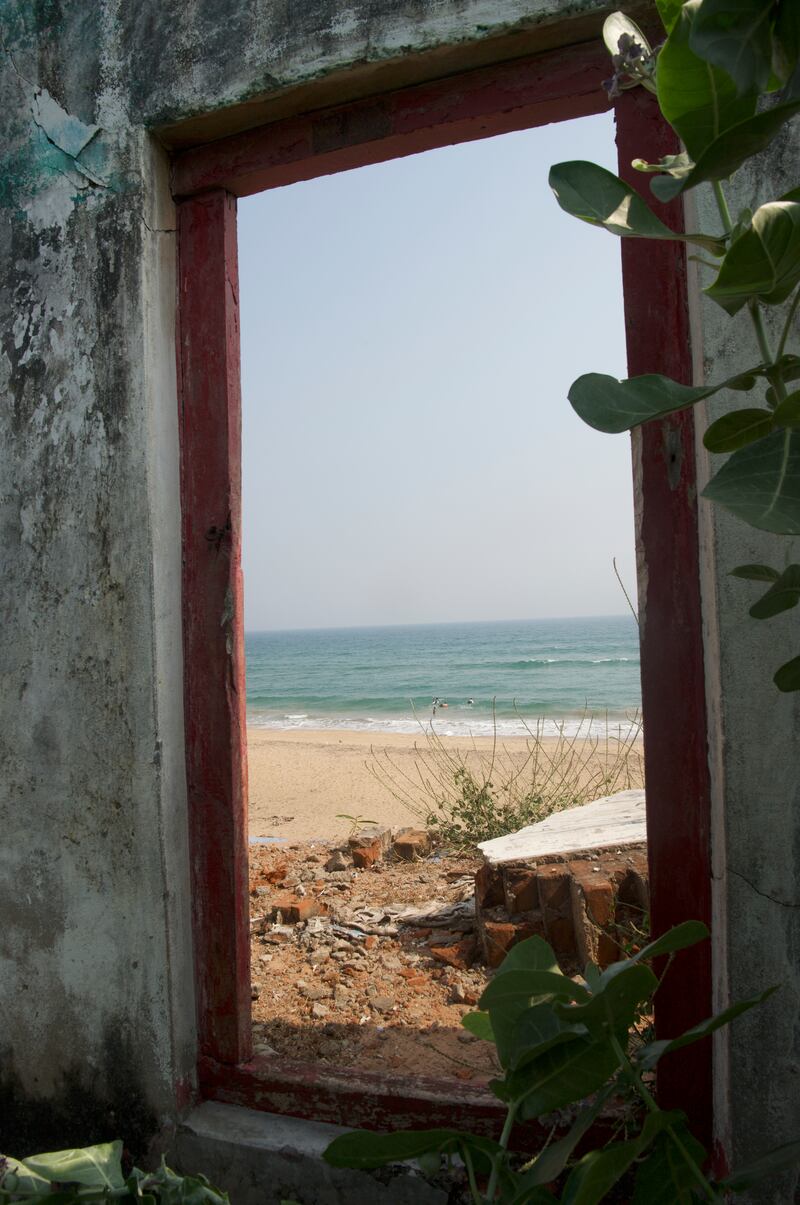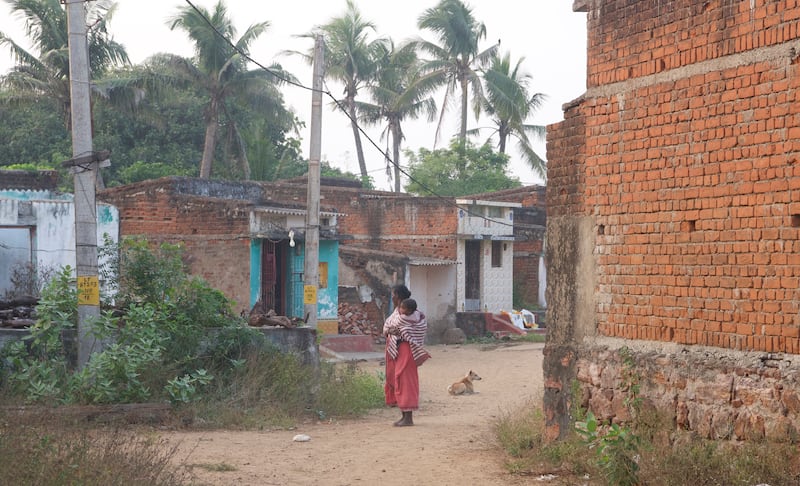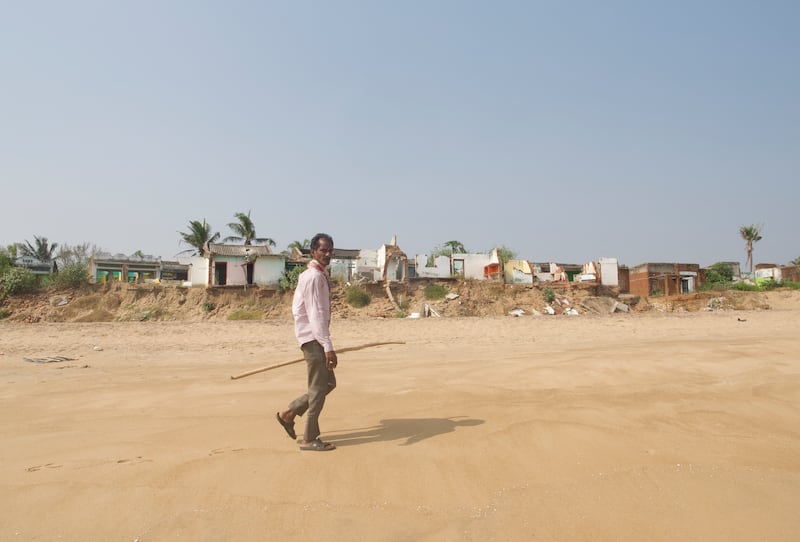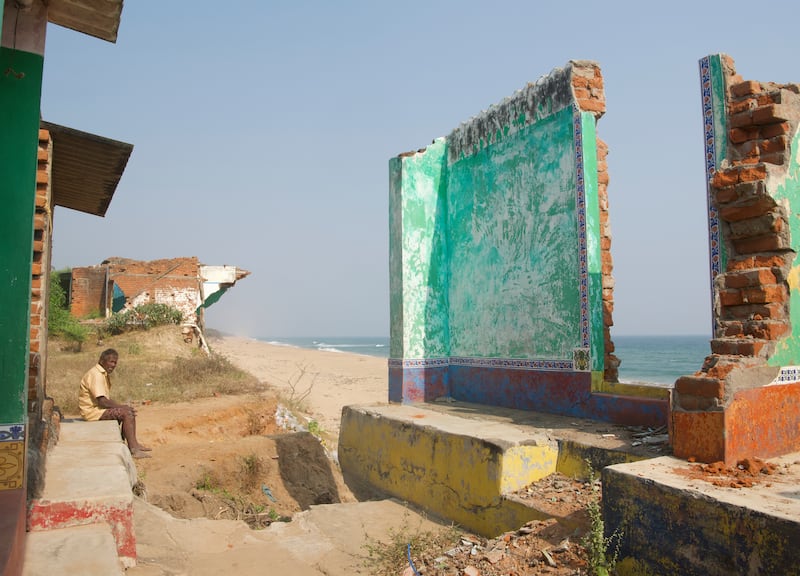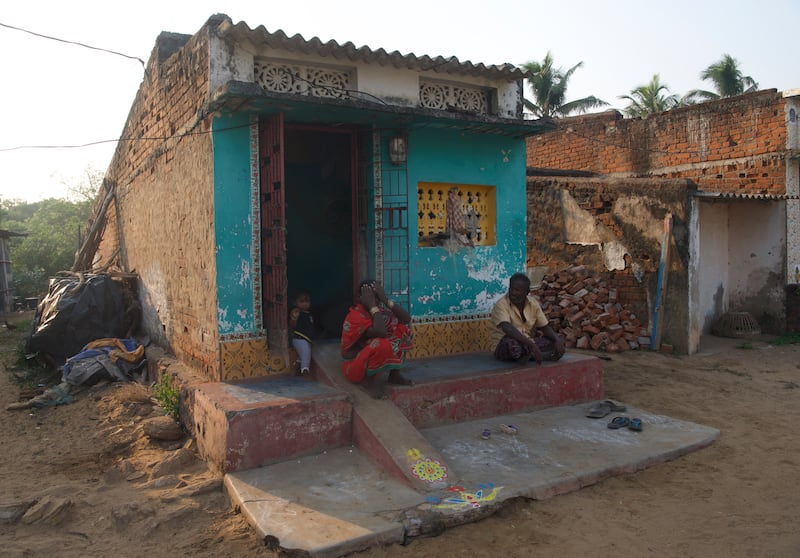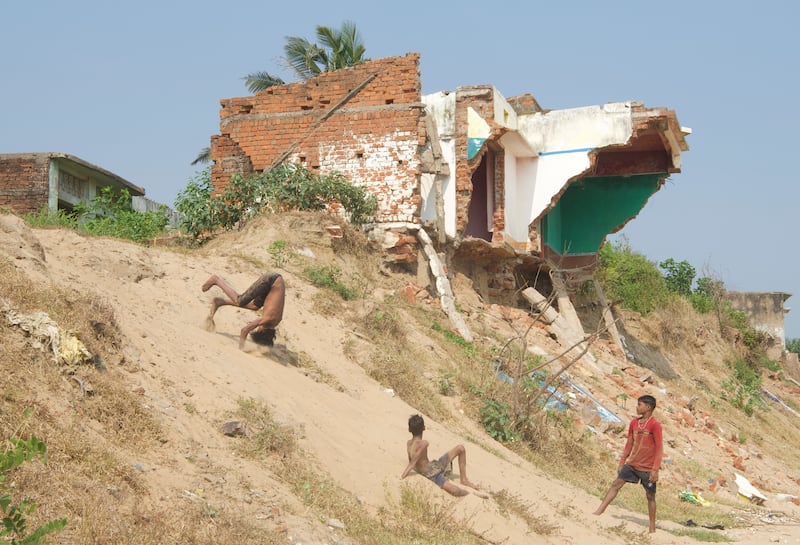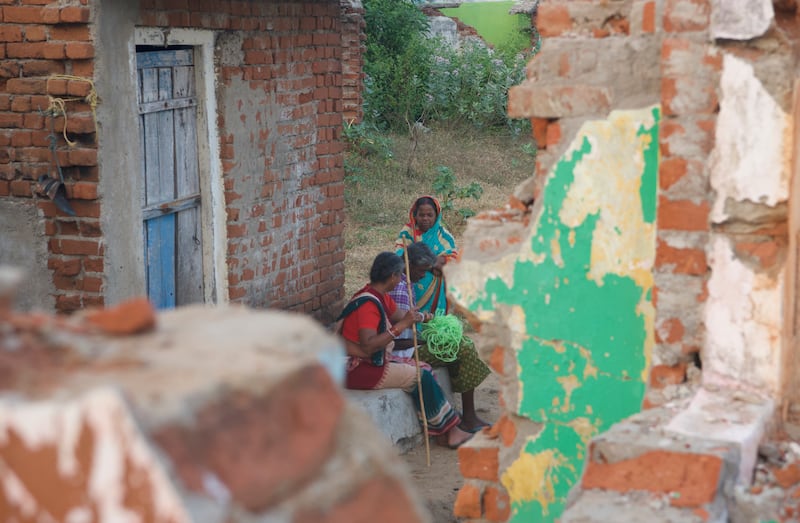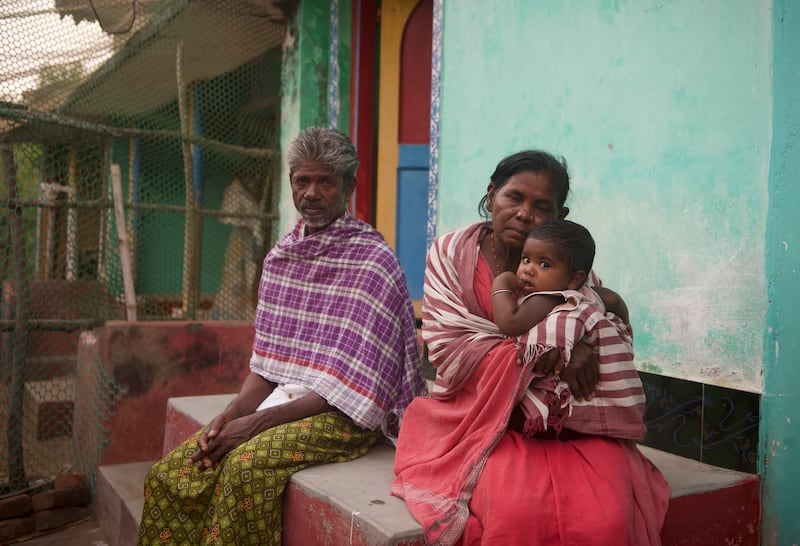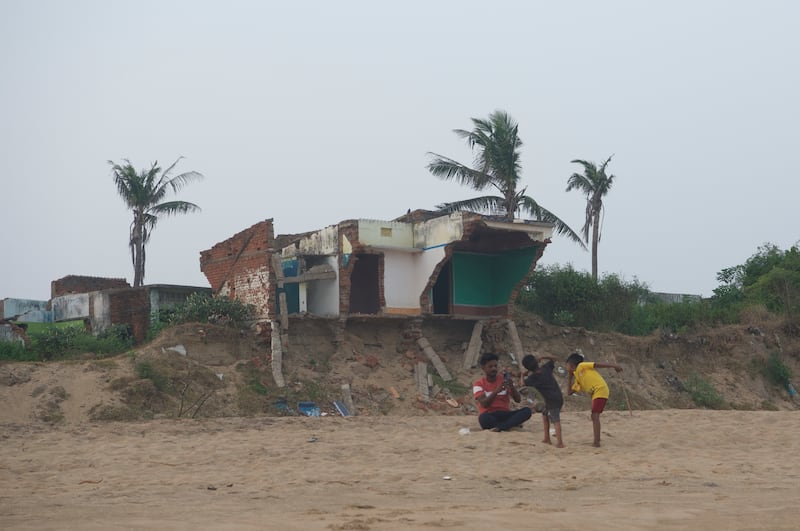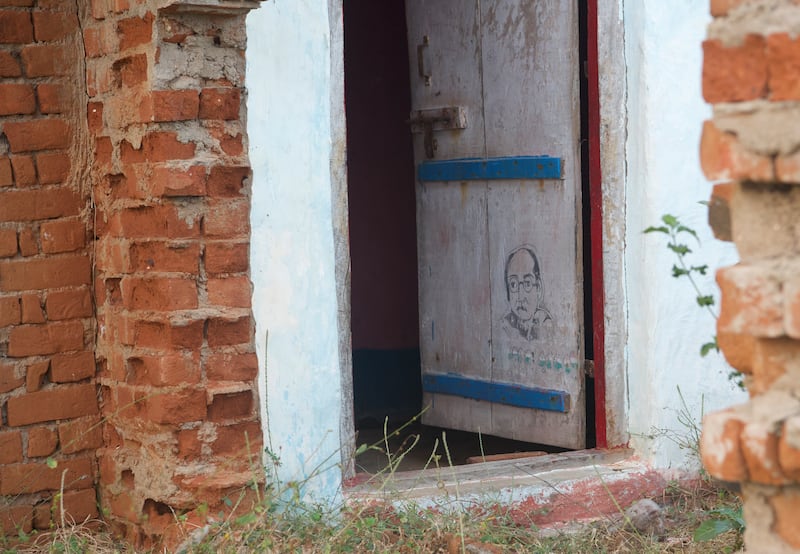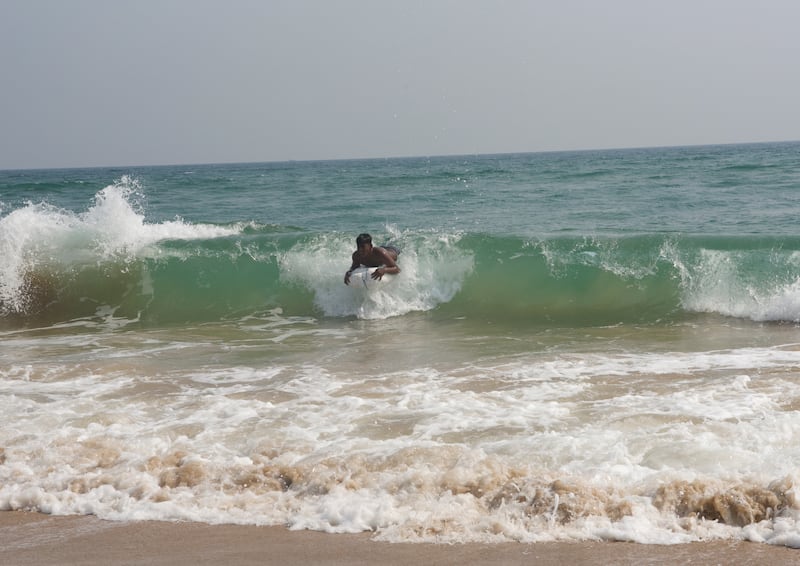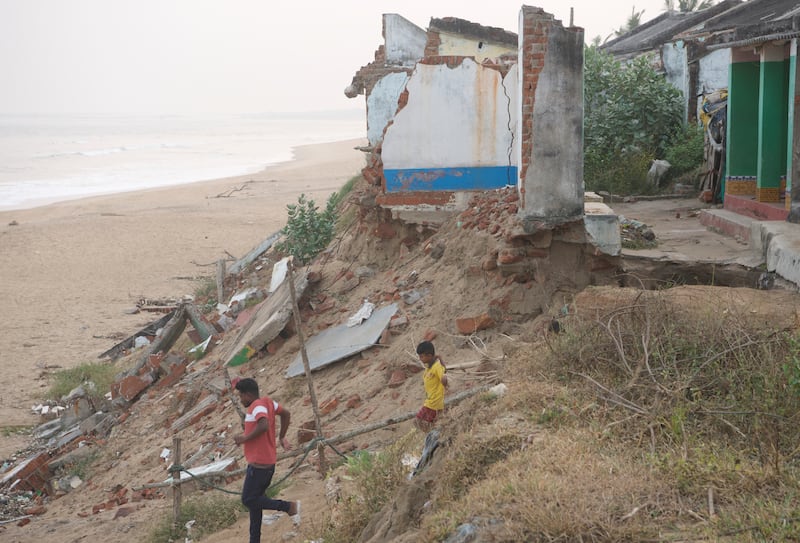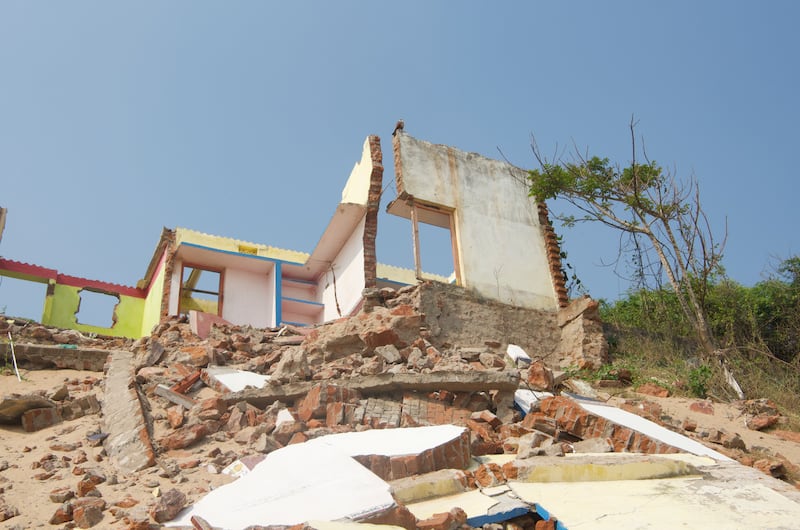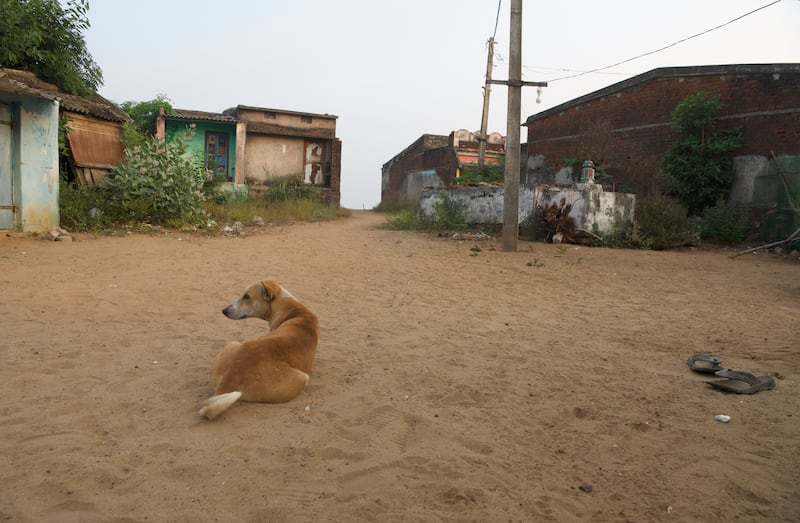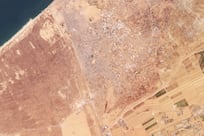As tides crash into miles of brown sand, rows of brightly painted houses cling to their crumbling foundations.
Sitting along the world’s largest bay, on India's eastern coast in the Bay of Bengal, the eerie ghost village of Podampeta was once a bustling, prosperous fishing community.
But now, the houses in the eastern state of Odisha are a testimony to widespread devastation caused by climate change.
They have long been abandoned, their walls cracked and collapsing, in the village that stands less than 200 metres from the shore.
Name plates still hang outside the neatly painted entrances. Inside the homes, tattered clothes and slippers are scattered across the floors, remnants of their former owners.
The village, once home to 1,500 inhabitants, has rapidly been damaged since 2007 by land erosion and the intruding sea.
Of 500 families, only 11 members of two families remain.
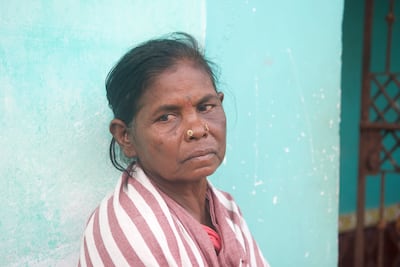
Jaya Rajamma is one of them.
The 65-year-old mother of four lives with her two daughters, both in their thirties, and her husband, a former fisherman.
“As a child, the sea was my favourite place. But now I am scared of it,” Ms Rajamma told The National, sitting outside her small two-bedroom house with her granddaughter.
“In the day, I keep looking at it and its waves to stay vigilant, but at night I prefer not to look at it. I am scared that it will come and swallow me and my family,”
The fishermen used to enjoy a prosperous life – there was fish in abundance and a good catch meant good sales in the market, Ms Rajamma said.
But the sea levels started rising and the water flooded the village. High tides destroyed houses.
Spectre of climate change haunts Indian coastal village
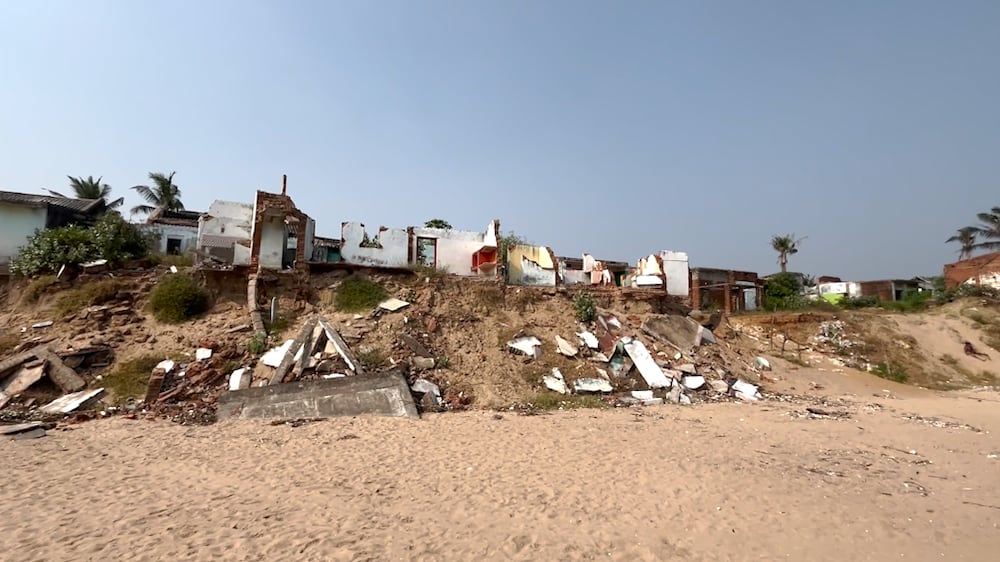
The state government relocated the residents to another village about five kilometres away and provided them each with a one-bedroom house under the Odisha Disaster Recovery Project.
Ms Rajamma's two sons, both married, received the new accommodation but she says she cannot move in with them.
“The house is small and my daughters will not have enough space there. We have nowhere to go,” she said.
Odisha is one of the Indian states worst affected by climate change.
Its coastline stretches 480 kilometres along the Bay of Bengal – the hotbed of tropical cyclones that batter its districts, along with other extreme climate events such as storms and flooding.
Eight out of the world's 10 deadliest tropical cyclones have originated over the bay, according to a list by Weather Underground.

The state's population of 47 million has endured 10 cyclones in the past two decades, including super cyclones that have killed tens of thousands and displaced millions living along the coastline.
Natural disasters have increased three-fold in the state between 1970 and 2019, according to the Council on Energy, Environment and Water, a Delhi-based policy research institution.
Odisha was devastated by the Great Orissa Cyclone in 1999 which killed 10,000 people.
Experts say the frequency and intensity of cyclones have escalated through the 2000s.
A study paper published in the journal Spatial Information Research in June 2018 found that about 196km of Odisha’s shoreline has undergone erosion between 1990 and 2015.
One of the main reasons is rising sea levels.
A paper published in Applied Ecology and Environmental Research in 2022 found that sea levels along Odisha have risen by 9.5cm between 1966 and 2015.

Sarat Chandra Sahu, director of the Centre for Environment and Climate at Siksha ‘O’ Anusandhan university in state capital Bhubneswar, said low depression in the sea due to climate change combined with factors such as soil condition and topography make the area prone to erosion.
“Odisha is experiencing cyclones throughout the year, even in December. It is because of climate change,” Mr Sahu told The National.
“The temperature of the sea is increasing, which is causing the formation of low-pressure areas in the sea.” he said. “The wind speed has increased to 35-45kph and wind blows along the coast, which may cause erosion.”
Low pressure happens when the atmospheric pressure is lower than that of its surroundings. It develops when warm and moist air rises from the earth’s surface. The system leads to more unstable and unpredictable weather patterns such as heavy storms.
Pratap Mohanty, an oceanographer from the Department of Marine Sciences, Berhampur University who has been studying erosion along Odisha’s coast for more than two decades, says that maximum erosion along the eastern coast is natural but is increasing due to climate change.
“We have been surveying the Odisha coast for more than 20 years and what we see is the shoreline change or the erosion are due to three factors – the cyclonic storm, approach of the waves that break on the shore and the coastal structure such as ports,” Mr Mohanty said.
For the displaced, the emotional loss of leaving their ancestral homes comes as they bear the brunt of climate change on their livelihoods.

Chandragiri Shyam, 30, a fisherman who moved to the new colony in 2019 with his three children, said his life changed after he was forced to relocate.
“I was born in this house. It was a beautiful village, there was sea, there were fish,” Mr Shyam said.
“This house was big. Now where I live, the house is small. There is no sea either. We have to go deep inside the sea to scour fish. I do not like it but at least, there is no water that will swallow us,” he said.
